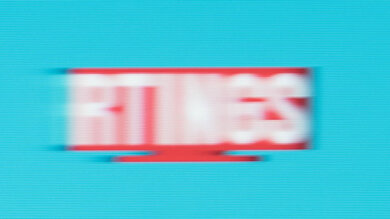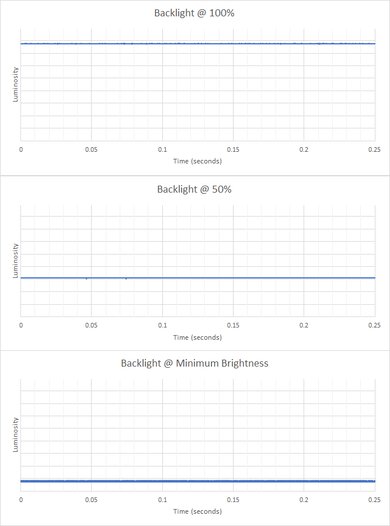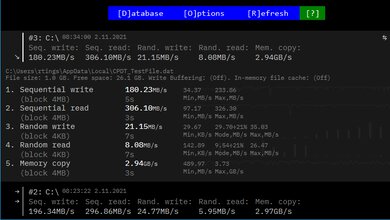The HP Stream 11 (2021) is an 11-inch budget Windows laptop. It's available with an Intel Celeron N4000 or N4020 CPU, 4GB of RAM, and up to 64GB of storage. It has a 60Hz 768p TN display, a 480p webcam, Wi-Fi 5 wireless connectivity, and a 38Wh battery. Ports include two USB-As, a USB-C, a MicroSD card reader, and a headphone jack. There are four color options: Diamond White, Royal Blue, Pink, and Black.
See our unit's specifications and the available configuration options in the Differences Between Variants section.
Our Verdict
The HP Stream is mediocre for school use. It's very portable thanks to its compact size, and its included power adapter is also small and should easily fit into most bags. Its Intel Celeron CPU can only handle easy tasks like web browsing, video playback, and word formatting, making this laptop unsuitable for those studying in more technical fields like 3D design or engineering. Sadly, the battery life is bad, lasting only a little over seven hours of light productivity. Also, the overall user experience isn't great as the screen looks dim and washed out, the keyboard is tiring to type on, and the touchpad is tiny.
- Easy to carry around due to compact size.
- Decent build quality.
- Screen too small for multitasking.
- Battery doesn't last a full 8-hour workday.
- Keyboard feels cramped and small touchpad makes dragging and dropping hard.
- Webcam image looks grainy and overexposed.
The HP Stream is bad for gaming. It's only available with low-power Intel Celeron CPUs and integrated graphics, so it can't handle games that are even remotely graphically demanding. Also, it has a 60Hz display with a slow response time and no VRR support. Although it doesn't get hot under load, there's a noticeable performance loss on the GPU.
- Doesn't get hot under load and is silent due to fanless design.
- CPU and integrated GPU aren't powerful enough for demanding workloads.
- No user-replaceable parts.
- Slow eMMC storage drive.
The HP Stream is sub-par for media consumption. It has a low-resolution display that looks washed out, and it doesn't get bright enough to combat glare in well-lit settings. It isn't ideal for dark rooms either because it has a low contrast ratio that makes blacks appear grayish. The speakers sound relatively neutral despite the lack of bass, and while they do get very loud, they distort at max volume. It's very portable, though, and its battery life is decent for video playback, enough to get through a couple of TV show episodes.
- Easy to carry around due to compact size.
- Decent battery life for video playback.
- Loud speakers.
- Low-resolution screen looks dim and dull.
- Poor contrast makes blacks appear gray in dim settings.
- Speakers distort at max volume.
- Image looks inaccurate when viewed at an angle.
The HP Stream is bad for use as a workstation. Its Intel Celeron CPU and integrated graphics aren't powerful enough to handle demanding workloads, and the GPU throttles under load. You can only get up to 4GB of RAM and 64GB of slow eMMC storage, and unfortunately, you can't upgrade them yourself as most components are soldered onto the motherboard. On the bright side, it has a reasonable number of ports, including a full-size HDMI to connect an external display.
- Doesn't get hot under load and is silent due to fanless design.
- CPU and integrated GPU aren't powerful enough for demanding workloads.
- No user-replaceable parts.
- Slow eMMC storage drive.
The HP Stream is inadequate for business use. Although its compact size makes it very portable, its battery doesn't quite last a full 8-hour workday, so you have to carry the power adapter as well. Its Intel Celeron CPU is only capable of handling light productivity tasks like web browsing and text formatting, and it'll likely stutter if you have too many tabs or applications open at once since it only has 4GB of RAM. On the upside, the build quality is decent even though it's entirely plastic, and it has a reasonable number of ports, including a full-size HDMI should you need to connect an external display for presentations.
- Easy to carry around due to compact size.
- Decent build quality.
- Full-size HDMI port to connect an external display.
- CPU and integrated GPU aren't powerful enough for demanding workloads.
- Screen too small for multitasking.
- Battery doesn't last a full 8-hour workday.
- Keyboard feels cramped and small touchpad makes dragging and dropping hard.
- Webcam image looks grainy and overexposed.
Check Price
Differences Between Sizes And Variants
We tested the 11.6-inch HP Stream (model 11-ak0090wm) equipped with an Intel Celeron N4020 CPU, Intel UHD Graphics 600, 4GB of RAM, and 64GB of storage. There are many HP Stream models, as they are available in 11.6-inch and 14-inch sizes and various CPU configurations. However, some models have different designs and port selections, so to avoid confusion, our review is only applicable with a model number starting with '11-ak'.
| Screen |
|
|---|---|
|
CPU |
|
| GPU |
|
| Memory |
|
| Storage |
|
| Color |
|
See our unit's label here.
Popular Laptop Comparisons
The HP Stream is a mediocre laptop. It feels cheap built and provides a sub-par user experience due to its low-quality display, cramped keyboard, and slow CPU performance.
See our recommendations for the best budget and cheap laptops, the best Windows laptops, and the best laptops under $500.
The HP Stream 11 (2021) is better than the Thomson NEO 10 (2020) overall. The HP has a slightly larger, sharper, and brighter display. It also has a better keyboard, touchpad, and speakers than the Thomson. The HP's CPU and GPU are more powerful, so the system as a whole feels faster and more responsive. Both devices are only capable of handling simple tasks like web browsing and video playback, not demanding workloads like video editing or AAA gaming.
The HP Stream 11 (2021) and the HP Chromebook 14 (2021) are laptops with different operating systems; the Stream 11 runs Windows 10S, while the Chromebook 14 runs Chrome OS. You can install third-party applications on the Stream if you take it out of S mode, whereas the Chromebook 14 is limited to web apps, Android apps from the Google Play Store, and Linux apps. The Chromebook 14 has a larger display but the same 720p resolution as the Stream 11, so the image doesn't look as sharp because the pixel density is lower. The Chromebook 14 has a better keyboard and touchpad, and its battery life is significantly longer. Although the Stream 11 uses a newer version of the Celeron CPU in the Chromebook 14, the latter feels faster and more responsive overall because Chrome OS is a lighter operating system with fewer processes running in the background.
The HP Stream 11 (2021) and the Samsung Chromebook 4 (2019) are both 11.6" laptops, but the HP runs Windows 10S, while the Samsung runs Chrome OS. Performance-wise, the Samsung feels snappier and more responsive than the HP because Chrome OS is a lighter operating system. However, Chrome OS is more limited because you can only use web apps, Android apps, and Linux apps, while the HP can run full x86 programs if you take it out of S mode. Battery life is much better on the Samsung for light productivity, but the HP lasts longer for video playback. The Samsung feels better built, with a higher quality keyboard, touchpad, and webcam.
The HP Stream 11 (2021) and the Lenovo Chromebook Duet (2020) are compact devices designed for light tasks like web browsing and media playback. However, the Stream 11 runs Windows, while the Chromebook Duet runs Chrome OS. The Duet is more versatile because it's a 2-in-1 convertible with a detachable keyboard. The Duet's screen is smaller, but it's much sharper, brighter, and more colorful, whereas the Stream 11's screen looks dim and dull. The Duet has better battery life for web browsing and video playback, but it doesn't last as long as the Stream 11 for gaming.
Test Results

The serviceability is bad. It's hard to access the internals because you have to remove the feet first before removing the screws. The keyboard comes off to reveal the components, of which only the wireless adapter and battery are user-replaceable. The three-ribbon cable connecting the keyboard and the motherboard is hard to reattach once it has been disconnected. Opening the laptop and making changes to the hardware may void the manufacturer's warranty.
The HP Stream has only one display option. It's reasonably sharp, but there isn't much room for any split-screen multitasking, so it's best suited for people who only need to view one window at a time. The bezels are thick and can be distracting for some.
The screen's brightness is mediocre. It's okay for a moderately lit room, but it isn't bright enough to overcome glare in a well-lit or sunny environment. It does get very dim at the lowest brightness setting, though, so it's easier on the eyes when viewing content in the dark.
The display's horizontal viewing angle is sub-par. The gamma changes quickly as you move off-center.
The display's vertical viewing angle is bad. The image looks particularly inaccurate when viewing from below due to chroma inversion on the TN panel. You have to look at the screen directly to get the best image quality, which might be difficult in some situations.
The display accuracy is terrible out of the box. Most colors are inaccurate due to the TN panel's poor color gamut, and the white balance is also visibly off. Everything looks bluish because the color temperature is extremely cool, and the gamma is too high, making most scenes appear too dark.
The display has a poor color gamut. It doesn't even have full coverage of the commonly used sRGB color space, so most content looks dull and washed out. It also has very limited coverage of wider color spaces like Adobe RGB, DCI P3, and Rec. 2020. We don't recommend using this screen for any color-critical work or for viewing HDR content.
The HP Stream has a bad keyboard. The keys are stable, and the spacing is good, but it still feels cramped because it's such a compact laptop, making it unpleasant to type on for extended periods. There's quite a bit of travel for a laptop keyboard with scissor switches, though, and it doesn't require much force to actuate the keys. Unfortunately, there's no backlighting, so it isn't the best option for dim settings. If you want a laptop with a better keyboard, check out the HP Pavilion x360 11 (2021).
The speakers sound relatively neutral even though they have almost no bass whatsoever. They get very loud, but there's a lot of distortion at max volume.
The webcam is bad. The image looks soft, grainy, and overexposed, with a very narrow field of view. The microphone sounds relatively clear, though there's some static noise and distortion.
The port selection is okay. All the USB ports support USB 3.2 Gen 1 (up to 5Gbps data transfer speed). Unfortunately, you can't use the USB-C for video output or charging, so you'll have to use the full-size HDMI to connect an external display and the included barrel plug for power. There's a Kensington Nano security lock on the left side.
The wireless adapter is a Realtek RTL8822CE.
The HP Stream (model number starting with 11-ak) is available with the following CPUs:
- Intel Celeron N4000 (2 cores/2 threads, 1.1GHz to 2.6GHz)
- Intel Celeron N4020 (2 cores/2threads, 1.1GHz to 2.8GHz)
They're both dual-core CPUs with no hyperthreading; the only difference is that the N4020 is newer and runs at higher clock speeds, though the difference in real-world usage isn't noticeable in most instances. Both CPUs can handle basic tasks like web browsing, text formatting, and video playback; however, they aren't powerful enough for moderate or heavy workloads like video editing or 3D modeling.
The Intel UHD Graphics 600 is an integrated GPU on the Intel Celeron N4020 and the Intel Celeron N4000 CPUs. It's designed for light productivity tasks and media consumption. It isn't powerful enough for graphically demanding tasks like 3D rendering or gaming, though it can likely handle easy-to-run puzzle games from the Windows Store.
The HP Stream is only available with 4GB of RAM. This amount of RAM is barely enough for the operating system and will cause stutters and slowdowns, even in light workloads with only a few browser tabs open.
You can configure this laptop with 32GB or 64GB of storage. Regardless of your usage, it's best to get a 64GB model because 32GB is barely enough for the operating system and will cause issues with Windows updates in the future.
The HP Stream's overall score in Geekbench 5 is terrible. The Intel Celeron N4020 CPU and its UHD Graphics 600 integrated GPU are only powerful enough for everyday tasks like web browsing and video playback. The Intel Celeron N4000 CPU will perform even worse.
The Intel Celeron N4020 isn't ideal for 3D rendering. It takes more than an hour to render the BMW scene in Blender. We can't run the GPU rendering test because Blender doesn't support the Intel UHD Graphics 600 integrated GPU.
This laptop can't run Borderlands 3. The game crashes on startup, even at the lowest settings.
This laptop can't run Civilization VI.
The HP Stream can run CS:GO, but it's unplayable because its integrated GPU can only reach frame rates in the single digits, even with the lowest graphical settings.
The laptop can run Shadow of the Tomb Raider at the lowest graphical settings, but it's unplayable because it can only push out a single frame per second on average.
The keyboard only gets mildly warm around the number 0 key, though not enough to cause discomfort. There's no fan noise since this is a fanless device.
The HP Stream ships with Windows 10 in S Mode, a stripped-down version of the operating system designed for low-power laptops. Windows 10S has fewer features and background processes, making the system feel more responsive, but you can only install apps from the Windows Store. You can switch out of S Mode if you need to install apps from other sources, but this change is a one-way street, meaning you can't go back to S Mode once you've activated the full version of Windows. There are a couple of pre-installed software applications, including:
- Dropbox: Access to Dropbox cloud storage. This app is only for Windows S Mode.
- HP Jumpstart: Guide for new users. Includes device registration, special offers, and tips on using the device.
- HP Documentation: Warranty information, user guide, as well as safety and regulatory information.
- HP Support Assistant: Helps with system updates and troubleshooting of common issues. Connects user with HP Virtual Agent for further troubleshooting.
- HP System Event Utility: Allows users to program special function keys or shortcuts, like for turning the wireless on and off, and adjusting the screen brightness.
- McAfee Personal Security: 30-day trial of McAfee antivirus software.
- Netflix: App for the video streaming service.
- Simple Solitaire: Solitaire game.
- Walmart: Link to Walmart website. This is only on units sold at Walmart.


































